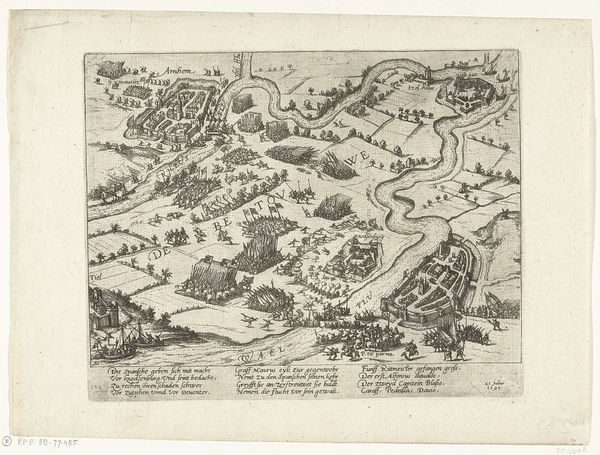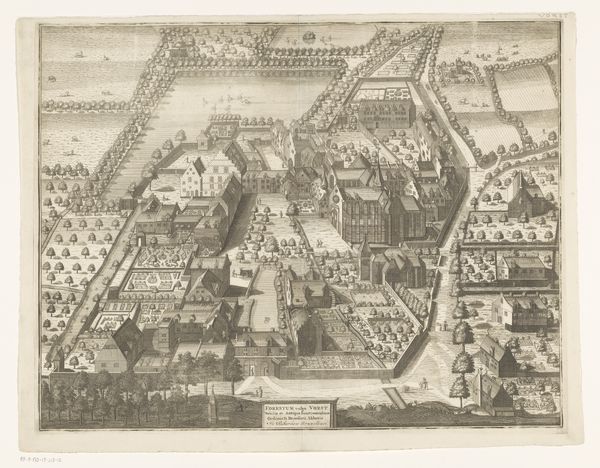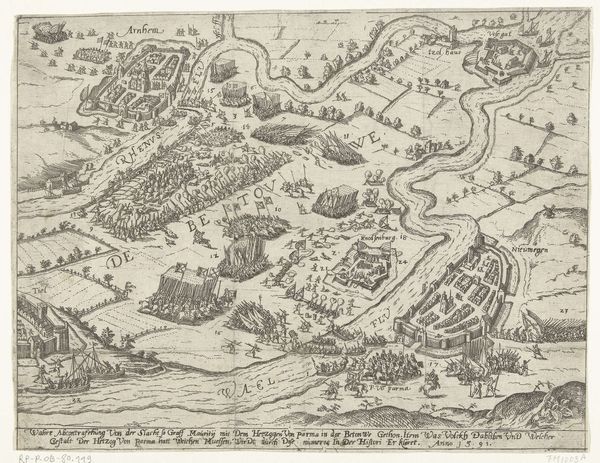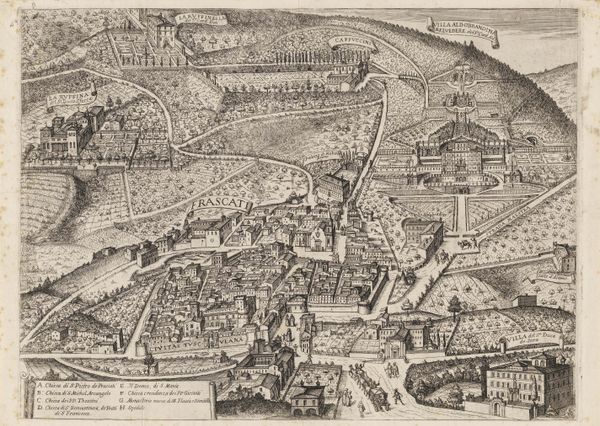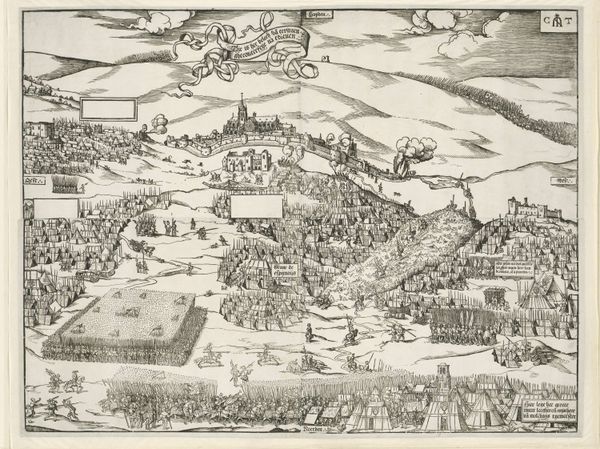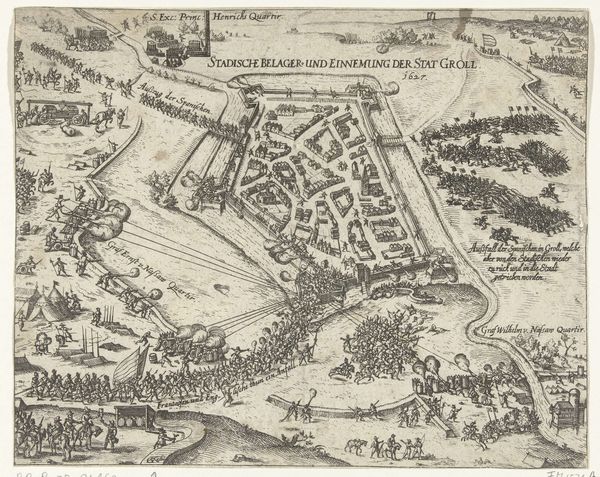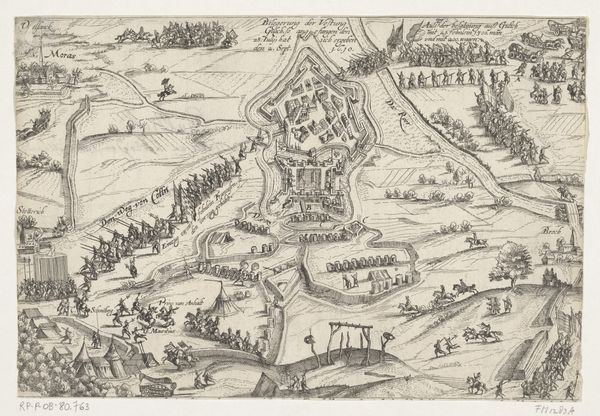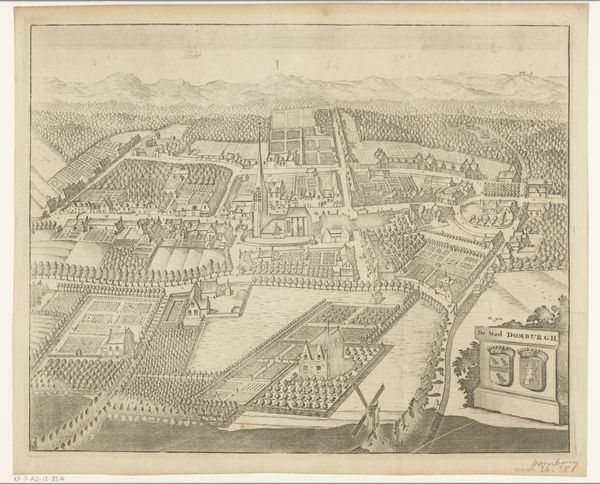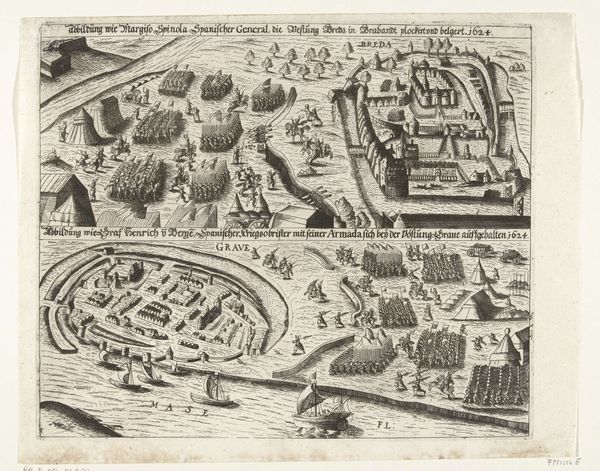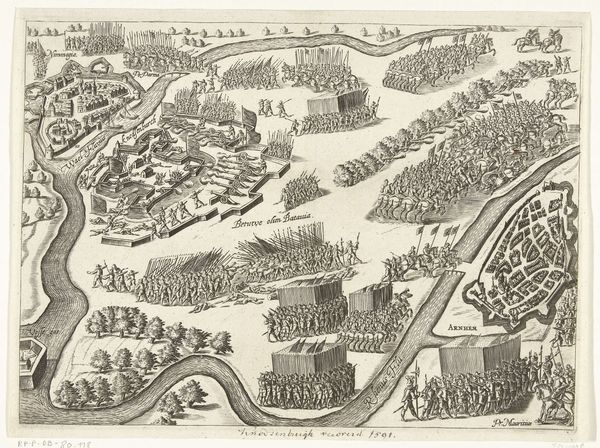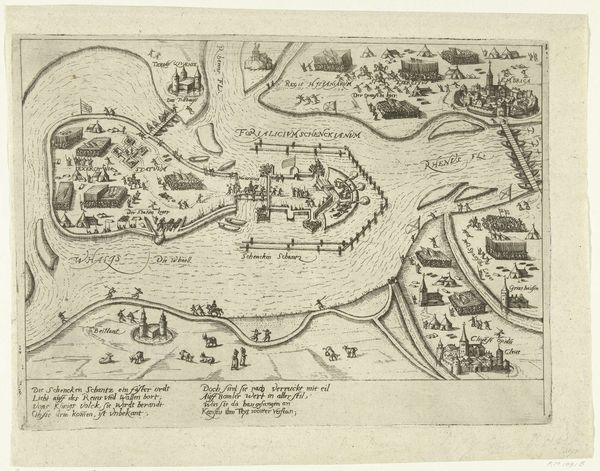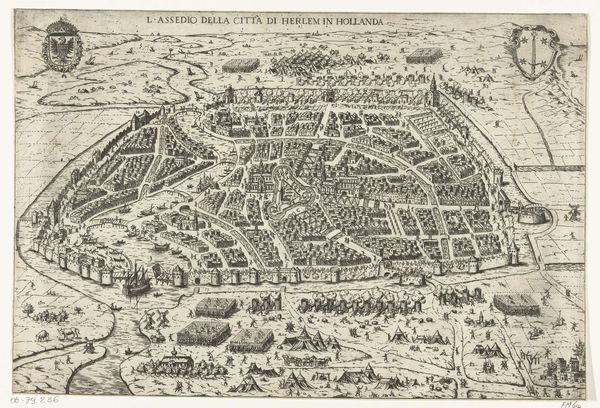
drawing, print, engraving
#
drawing
#
baroque
#
pen drawing
# print
#
landscape
#
cityscape
#
genre-painting
#
history-painting
#
engraving
Dimensions: height 245 mm, width 313 mm
Copyright: Rijks Museum: Open Domain
Curator: We are looking at "Inname van Tienen, 1588" an engraving rendered in pen by Bartholomeus Willemsz. Dolendo sometime between 1600 and 1610. It’s part of the Rijksmuseum collection. Editor: It’s striking how ordered the composition is. Despite the apparent chaos of a siege, there’s a remarkable symmetry to the placement of elements. It creates a slightly unsettling calm before what must have been a storm. Curator: Absolutely. Consider the line work here, the precision in the architecture. The technique directs our gaze across the townscape, illustrating, almost clinically, the mechanics of conflict, not just through the obvious clashes of the besieging army. Editor: For me, what’s most striking is the intense labour embedded within this kind of image production. The rigorous craftsmanship needed for the meticulous lines created through an engraving process demands attention; each one contributes to the spectacle of war and the visual record that follows. We're far removed from the physical mud and clamor of battle itself, of course. Curator: Indeed, but think too about how Dolendo employs the stylistic conventions of the baroque era to enhance the visual hierarchy. The clear delineation of space allows a narrative progression across the artwork. From the lower registers to the center. Editor: Still, this representation flattens the visceral experience. Engraving allowed multiple copies, making the event digestible—a commercial, political transaction memorialized in reproducible form. There’s a clear material translation from lived historical event to reproducible political narrative, accessible and readily traded on the early modern print market. Curator: A valid point. But look, there's also an engagement with capturing the essence of place, and how he communicates this drama using linear form. Ultimately that is still about translating emotional meaning via aesthetic skill. Editor: Maybe so. I'm interested in its distribution; how readily images like this moved between urban centers across the Dutch Republic, and its use as a record for a wide public during its time, while celebrating a very ordered world. Curator: Seeing it that way allows one to truly consider the artist's visual statement and the meaning embedded within it. Editor: And seeing it your way reminds me of the layers that create an engaging and meaningful viewing experience, from design to craft, and social document.
Comments
No comments
Be the first to comment and join the conversation on the ultimate creative platform.
